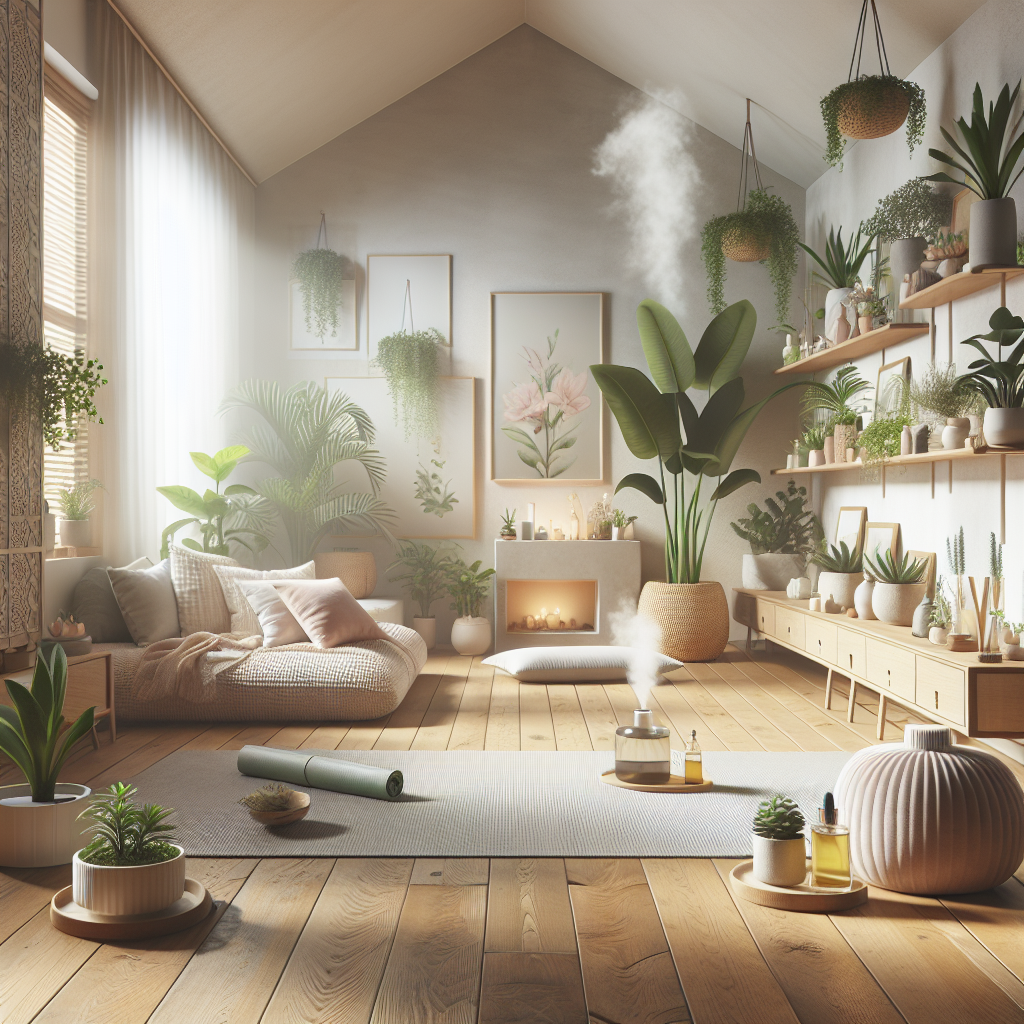Every day, we find ourselves engulfed in concrete landscapes, often forgetting the therapeutic benefits that nature provides. Among the many avenues to improve our well-being, greenery and plants for indoor wellness stand out as a powerful solution. Studies show that indoor plants can reduce stress levels, enhance productivity, and improve air quality. In this comprehensive guide, you will learn why integrating greenery into your living space is essential, how to choose the right plants for your environment, and practical tips for nurturing them to flourish in your home.
Let’s journey through the various aspects of indoor plants, explore their emotional and physical benefits, and discover actionable steps you can take today to create your own green sanctuary.
The Psychological Benefits of Indoor Plants
Plants have an incredible ability to enhance our mental well-being. Studies indicate that simply being near greenery can decrease stress and anxiety levels. Furthermore, they can uplift our mood and even improve concentration.
Plants as Mood Lifters
Have you ever noticed how entering a room adorned with plants can instantly make you feel more relaxed? This effect is backed by research. In one study, participants in environments with plants reported a more positive emotional state compared to those in stark settings.
Choosing the Right Plants for Your Space
When it comes to integrating greenery into your home, selecting the right plants is crucial. Consider factors such as lighting, space, and care instructions.
Low-Light Options
- Snake Plant: Resilient and powerful in purifying the air.
- Pothos: Beautiful trailing vines that thrive in various conditions.
- ZZ Plant: Requires very little maintenance and tolerates neglect.
How to Care for Houseplants
Maintaining your indoor garden doesn’t have to be daunting. With a few basic guidelines, your plants can flourish.
Watering and Light Needs
Ensure you understand the specific water and light requirements of each plant type. Overwatering is a common mistake that can lead to root rot, whereas too little water can stunt their growth.
Improving Air Quality with Indoor Plants
One of the oft-touted benefits of indoor plants is their ability to filter toxins from the air. NASA’s Clean Air Study highlighted several plants that can significantly improve indoor air quality.
High-Performing Air-Purifying Plants
- Peace Lily: Effective at removing formaldehyde from the air.
- Spider Plant: Known for its efficiency in eliminating indoor pollutants.
- Aloe Vera: Besides being a medicinal plant, it also purifies the air.
Creating an Indoor Green Space
Transforming your indoor area into a green space requires planning and imagination. Here’s how to make the most of your plants:
Vertical Gardening
For those short on space, vertical gardens can add a lush feel without consuming floor space. You can utilize wall-mounted pots or hanging plants to create an enchanting vista.
Conclusion: The Path to Wellness through Greenery
Integrating greenery and plants into your indoor environment can significantly enhance your well-being. Through the physiological benefits and improvement in air quality, every plant offers a chance to connect with nature. Adopting just a few indoor plants can steer you towards a healthy lifestyle. Start your journey today and watch as your indoor sanctuary flourishes.
Ready to embrace the green? Don’t forget to check our other articles on plant care and indoor gardening!
FAQ Section
What are the best indoor plants for beginners?
Good choices for beginners include snake plants, pothos, and spider plants due to their forgiving nature and low maintenance needs.
How do indoor plants improve air quality?
Indoor plants improve air quality by absorbing toxins and releasing oxygen, effectively filtering the air in your environment.
Can indoor plants help reduce stress?
Yes, various studies have indicated that having plants around can lower stress levels and improve overall mood.
Is it possible to overwater indoor plants?
Absolutely, overwatering can lead to root rot, which is a common issue for many indoor gardeners. It’s essential to understand each plant’s water needs.
How much light do indoor plants need?
Light requirements vary by plant. Low-light plants can thrive in indirect sunlight, while others need bright, direct light to flourish.
Content Disclaimer
Information provided in this article is for educational purposes only and should not be considered professional medical advice. Always consult a healthcare provider for any health-related decisions.
Categories
- Accent Walls & Ceilings (8)
- Art Curation & Gallery (25)
- Bedding Style Trends (42)
- Bedroom Makeover (28)
- Bohemian & Eclectic Styles (8)
- DIY & Budget-Friendly Decor (8)
- Eco-Friendly Design (8)
- Furniture Care (28)
- Home Decor & Design Ideas (101)
- Home Wellness Spaces (8)
- Integrated Outdoor Living (7)
- Kids and Nursery Decor (8)
- Living Room Decor (29)
- Minimalist & Japandi Style (11)
- Mix & Match Techniques (29)
- Modern & Contemporary Design (7)
- Rug Sizing & Placement (28)
- Seasonal Home Decor (30)
- Small Space Solutions (12)
- Wall Art & Painting Tips (30)
Recent Posts
Recent Comments
Archives
Product Gallery
-
 Abstract Bohemian Geometric Beige Poster Canvas Painting Wall Art Printing Picture Bedroom Living Room Home Decoration Picture
$3.79 – $21.95Price range: $3.79 through $21.95
Abstract Bohemian Geometric Beige Poster Canvas Painting Wall Art Printing Picture Bedroom Living Room Home Decoration Picture
$3.79 – $21.95Price range: $3.79 through $21.95
-
 Scandinavian Flower Canvas Posters Nordic Art Wall Painting Print Abstract Flowers Feather Decoration Picture for Living Room
$5.69 – $32.51Price range: $5.69 through $32.51
Scandinavian Flower Canvas Posters Nordic Art Wall Painting Print Abstract Flowers Feather Decoration Picture for Living Room
$5.69 – $32.51Price range: $5.69 through $32.51
-
 Abstract Native Indian riding Horse Figure Painting Canvas Posters and Prints Cuadros Art Wall Picture vintage room decor
$3.78 – $26.25Price range: $3.78 through $26.25
Abstract Native Indian riding Horse Figure Painting Canvas Posters and Prints Cuadros Art Wall Picture vintage room decor
$3.78 – $26.25Price range: $3.78 through $26.25



























